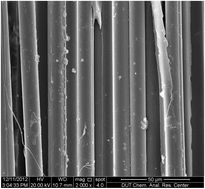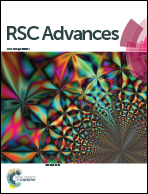Degradation of plasma-treated poly(p-phenylene benzobisoxazole) fiber and its adhesion with bismaleimide resin
Abstract
Degradation of poly(p-phenylene benzobisoxazole) (PBO) fiber which was modified by oxygen dielectric barrier discharge (oxy-DBD) plasma as well as its adhesion with bismaleimide (BMI) resin were studied in this paper. Surface changes of PBO fibers before and after plasma treatment were investigated by X-ray photoelectron spectroscopy (XPS), atomic force microscopy (AFM) and single fiber tensile strength (SFTS). Aging behaviors were obviously detected upon chemical changes while the morphology and surface roughness changed little. Oxygen content and O/C ratio of the fibers reduced a lot, which were from 24.83% and 0.350 to 20.88% and 0.268 after aging in air for 30 days, respectively. Furthermore, the adhesion of oxy-DBD plasma-treated PBO fibers reinforced BMI composites dropped dramatically in the first 5 aging days but had no obviously changes during 5–30 days, and the degradation ratio was about 18%. Otherwise, the damage to the tensile strength of single fibers caused by oxy-DBD plasma can be ignored with only 4.8% reduction and showed little change during the aging time (30 days). However, the aging effects did not recover the fiber surfaces to the original state, indicating that some permanent changes were generated in the fiber surfaces. Furthermore, the water absorption varied from different composites and all the samples had good humid resistance properties.


 Please wait while we load your content...
Please wait while we load your content...